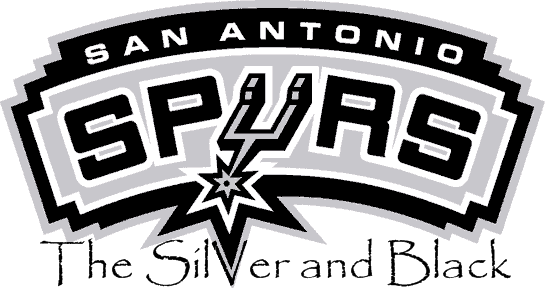With 41 seconds left in the 1st quarter of the opening game in the Western Conference Finals, Manu Ginobili’s quick hands deflect a desperation pass by Jazz forward Paul Millsap, leading to a Spurs fast break. Tony Parker recovers the loose ball, only to throw on the brakes in front of the standstill Mehmet Okur.
What came next was pure Magic…as in Johnson.
Parker, without hesitation, throws a pinpoint bounce pass between the legs of Okur, making him look like King Kong swiping at the gnat-like planes circling around him. The pass meets Ginobili in stride, who outhustles the entire Jazz backcourt to the rim, floats above Derek Fisher’s play for the ball, and finger rolls it softly in the basket.
Meet the San Antonio Spurs; far and wide the most boring team in the NBA.
Why has a team with three championship rings, a premier highlight-reel-in-the-making-backcourt, and the best power forward been labeled boring? Tony Parker averages at least two stunning layups a game, and Ginobili can rock players on their ankles with the best of them. Duncan puts up stunning numbers, and they are the best three point shooting team in the NBA. Boring seems, at the very least, a misnomer.
But the truth of the Spurs’ mainstream perception has nothing to do with the game of basketball itself. The truth, which few television faces or radio voices will admit to, is that the perception that shadows the Spurs has more to do with the NBA image than NBA basketball.
That’s right; the “boring” label has nothing to do with the substance of the game, and everything to do with tattoos, trash talk, and attitude.
Much of the Spurs inability to grasp the attention of the casual NBA fan has to do with their foreign flair. Players like Parker and Ginobili will never garner the public acclaim of Mike Bibby or Carmelo Anthony. Both Parker and Ginobili are All-Stars, but you’d be hard pressed to find any casual fans that would say they are better than Bibby or Anthony. The difference? Ink, urban flair, and domestic familiarity. Bibby and Anthony are homegrown talents, and Anthony embodies the familiar “rags to riches” NBA storyline. We watched them in college, we love their tattoos and street image. We love Anthony’s commercials, we love the in-your-face heroics displayed by Bibby. Are they better than Parker and Ginobili? Debatably, but their ability to absorb the image of the NBA allows us a given familiarity, whereas Parker and Ginobili remain enigmas outside of San Antonio. Being “street” in the NBA is more than an image; it’s an identity that gives us a more intimate idea of who a player is, even if it’s an unfair judgment.

But Bibby and Anthony are only examples. Dozens of players will receive more hype or praise from the media and fans for the ability to mesh with the long-established image of street basketball. It’s not about highlight reel plays, but about who is making them. Carlos Boozer (Alaskan), Tim Duncan (Virgin Islands), or Dirk Nowitzki (Germany) will never have the marketable flair of the Iversons, Anthonys, or McGradys. It’s not a matter of race, but a matter of familiarity, nationality, and relativity to NBA image. Tim Duncan can make a great pass out of the double, and it’s ho-hum, whereas Lebron’s passing makes him an MVP candidate.
The NBA struggles with the balance of marketing a street image to its central demographic: young to middle age white America. For certain players (here’s looking at you, Kobe), there is a pocket somewhere between the two polarities, a street image that seems somehow forced, unnatural. For other players, we feel we know them better because of their street image. It makes it easier for us to pigeonhole the player, to identify him based on a larger crowd. Quick: what do Carmelo Anthony, Allen Iverson, Mike Bibby, and Stephon Marbury all have in common? Your first perception will probably have little to do with basketball, but more to do with a trained (and yes, perhaps unjust) grouping of “street” players. These players are adopting an image, and in doing so, they adopt the connotations that come with it. The likes of Parker and Ginobili, however, don’t have an outside-the-NBA image, and it’s far more difficult to identify and market them.
Until we are able to identify Ginobili and Parker on a national scale, they’ll never be as popular. Until we know Parker’s favorite American hip-hop or Ginobili’s favorite American shoot-‘em-up movie, they’ll be labeled “boring” no matter how many highlights they make. Boring players? Not even close. Boring personalities? Hardly. Boring image? Absolutely, and that’s why the Spurs have been tagged as a boring team in the image-focused NBA world.
Elliot Cole is a Spurs blogger at http://www.thesilverandblack.blogspot.com and welcomes emails at elliot.cole@yahoo.com





1 comment:
Interesting take, great blog. Keep up the good work!
Post a Comment